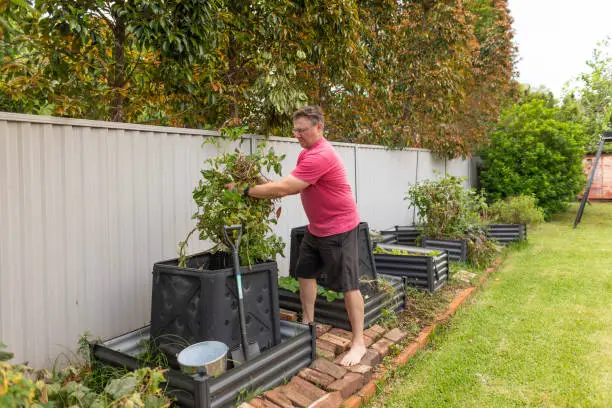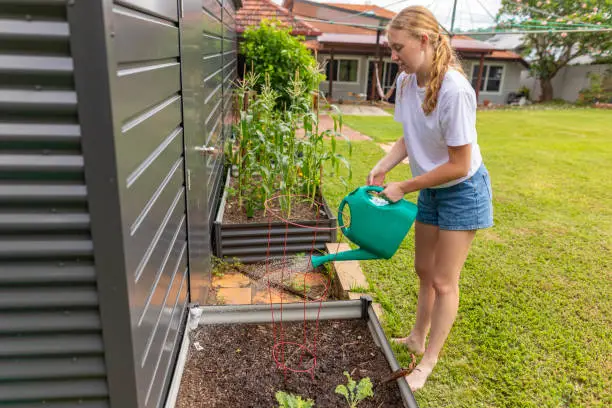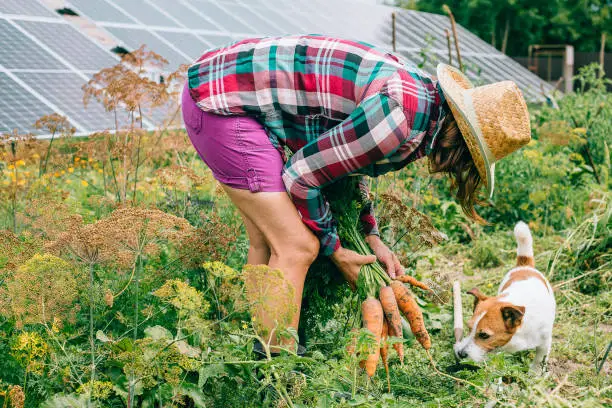Maintaining Peace in Urban Homesteading: Noise and Neighbor Relations
The backyard homesteading stands out as a symbol of sustainability and self-sufficiency in the city center, where traffic, people, and sirens mix. This beautiful hobby can rapidly cause loudness and neighborly issues in urban life. Urban homesteaders must balance self-reliance with congested living conditions. The delicate dance of communal ties, not the garden plot or chicken coop, brings harmony.

Urban homesteading is charming. Imagine walking outside to the sound of birds clucking, vegetable leaves rustling, and the smell of fresh vegetables. This peaceful picture has dissonant notes. After a while, the clucking and rustling become a stir, and the once-peaceful pursuit clashes with nearby homeowners’ expectations. Homesteading can unintentionally contribute to noise pollution, a typical urban issue that has taken on new dimensions.
Proactive measures, open communication, and innovative problem-solving are needed to overcome these problems. Local laws must be understood first. Cities and neighborhoods often regulate noise, livestock, and other homesteading activities. Being knowledgeable and compliant is the first step to conflict mitigation. Legality does not guarantee neighborliness. The loudness, frequency, and timing of sound affect its reception. Unlike a farm’s natural alarm clock, an urban rooster’s crow at dawn can be frustrating.
The approach is to manage these sounds with care and ingenuity, not just silence them. Fencing or strategically placing coops and gardens can reduce noise. Buying quieter animals or noise-reducing equipment shows a commitment to coexistence. A community garden, rather than a private one, can inspire shared investment and enjoyment, turning critics into collaborators.
Open communication is vital to urban homesteading’s harmony. Dialogue with neighbors prevents complaints and fosters understanding and respect. Sharing fresh eggs, vegetables, or baked items can turn noise worries into recipe and gardening discussions. Involving neighbors in planning, especially when adding new homestead aspects, can lead to more inclusive and imaginative solutions.
Despite good intentions, disagreements might develop. Mediation and community boards can resolve problems neutrally. These venues allow all parties to voice their concerns and work together to find a solution, typically with more creativity and flexibility than legal channels.
Urban homesteading’s impact on city life goes beyond noise and neighbor relations. It challenges established notions of sustainability, community, and self-sufficiency, allowing cities to evolve. Embracing these initiatives, municipalities can provide resources, workshops, and forums to integrate homesteading into the urban tapestry. Support empowers urban homesteaders and educates the community on its benefits and considerations.
Urban planning and design innovation may also improve coexistence. Green spaces, community gardens in city layouts, and shared homesteading spaces in residential areas help reduce noise. These designs serve urban homesteaders and enhance the city’s ecology and society.
The conversation between urban homesteaders and their neighbors will influence the movement as it grows. Negotiation involves trials, errors, successes, and failures. It celebrates city people’s perseverance and innovation in creating a sustainable route in the concrete jungle.
In conclusion, urban homesteading noise and neighbor relations issues are complex and varied. Legal compliance, proactive communication, and innovative problem-solving can help urban homesteaders keep the peace while pursuing their passion. A careful balance is needed to cultivate and embrace urban homesteading amid the dynamic tapestry of city life. As communities solve these issues, they build a more sustainable, connected, and resilient city.
Urban Homesteading: Raising Rabbits and Quail for Self-Sufficiency
Backyard homesteading has become a beacon for many seeking to reconnect with nature in metropolitan areas where space is scarce. This aim of sustainability and self-reliance often runs into city living’s practical restrictions, especially when keeping cattle. Due to space constraints, urban homesteaders must balance animal welfare and human neighbors’ sensitivity. Rabbits and quail are good urban livestock, each with its issues and solutions.
The urban homesteader should consider rabbits due to their small size and quiet demeanor. They thrive in small spaces and need less space than larger animals. However, they need help with their farming. Daily exercise, prolific reproduction, and waste containment require careful planning and creative solutions. The exercise runs or rotational enclosures can give rabbits exercise with little land. Breeding must be managed with discipline and knowledge of rabbit genetics and health to avoid overcrowding. Composting nitrogen-rich waste makes it an excellent resource for urban gardens.
However, quail offers fresh eggs and meat in a fraction of the space for regular chicken. Their quietness and little space need to make them inconspicuous in urban areas. Quail, like rabbits, have their own needs. They need predator-proof housing, especially in cities with cats and other predators. Their high-protein diet requires careful preparation for health and productivity. Quail thrives in groups. Thus, larger cages are needed to avoid overpopulation and ensure harmony.
Urban homestead rabbits and quail maintenance go beyond their cages. These animals’ benefits can be enhanced by their inclusion in a small urban farm’s ecology. Rabbit manure can feed worm farms or be composted into garden beds, providing rich vegetable nutrients. Quail’s foraging behaviors can reduce the garden’s chemical pest management requirement.
However, livestock near urban dwellings presents health and sanitation concerns. Waste management systems are advantageous and necessary to prevent odor and disease. Deep litter systems, regular cleaning, and efficient waste treatment and disposal can reduce these dangers, creating a healthy environment for animals and humans.
Another challenge of urban cattle management is navigating regulations. Many localities have animal ordinances limiting the number and type of animals, housing, and noise. Urban homesteaders must read and follow these restrictions, navigating a maze of permits and inspections.
Community relations are critical to urban homesteading success. With the appropriate attitude, neighbors who oppose cattle in a highly populated area can become supporters. Transparency, education, and sharing benefits like fresh eggs or garden food may build community and respect. Urban homesteaders can develop communal gardens or livestock co-ops by sharing resources and space.
Design and technological innovation provide livestock management with fascinating possibilities. Vertical farming, rooftop gardens, and balcony cages save room and enrich rabbits and quail. Composting methods like bokashi bins and worm farms can efficiently treat animal waste, solving difficulties.
As urban homesteading evolves, human-animal synergy increases. With their small space requirements and contributions to food security and waste management, rabbits and quail symbolize the sustainability and resilience that drive urban homesteading. Urban homesteaders are redefining sustainable city living via creative problem-solving, community engagement, and a deep dedication to animal welfare.
Incorporating rabbits and quail into urban life requires discovery, adaptation, and integration. It shows the inventiveness and perseverance of urbanites who want to connect with nature.






Leave a Reply